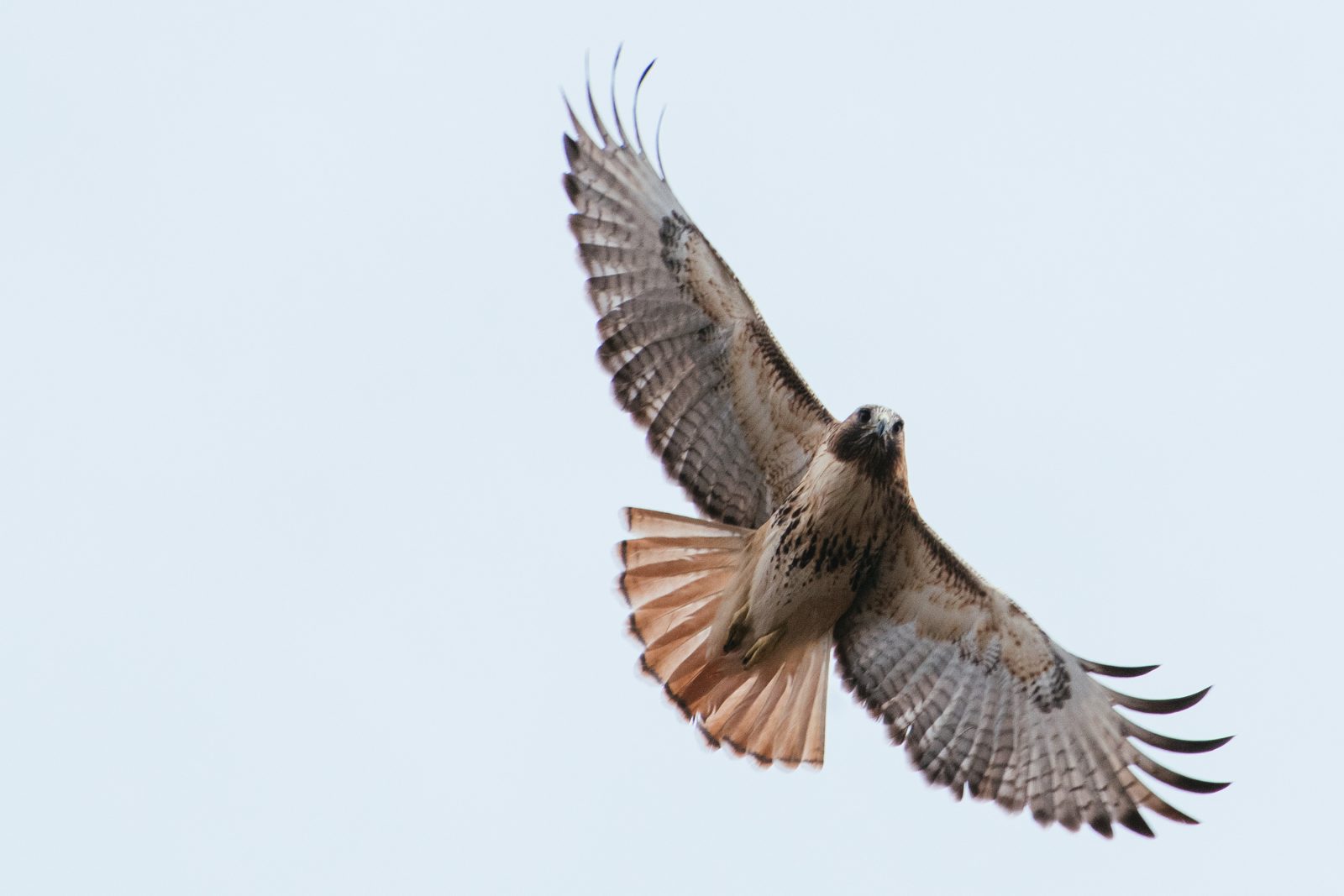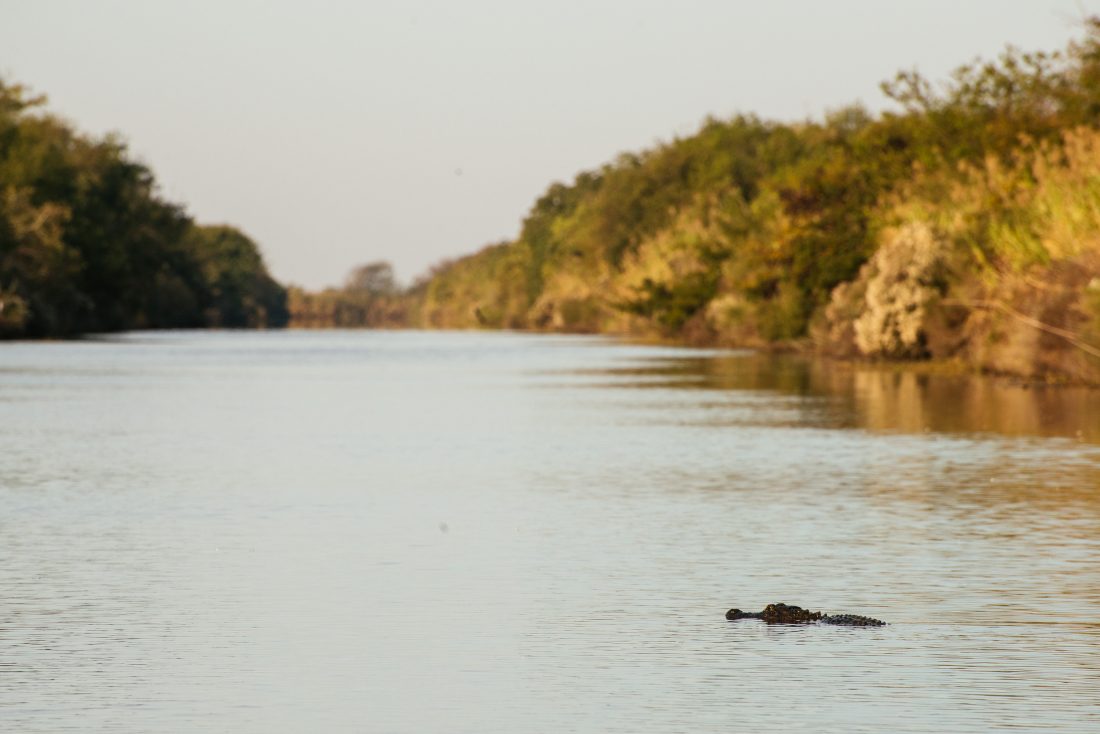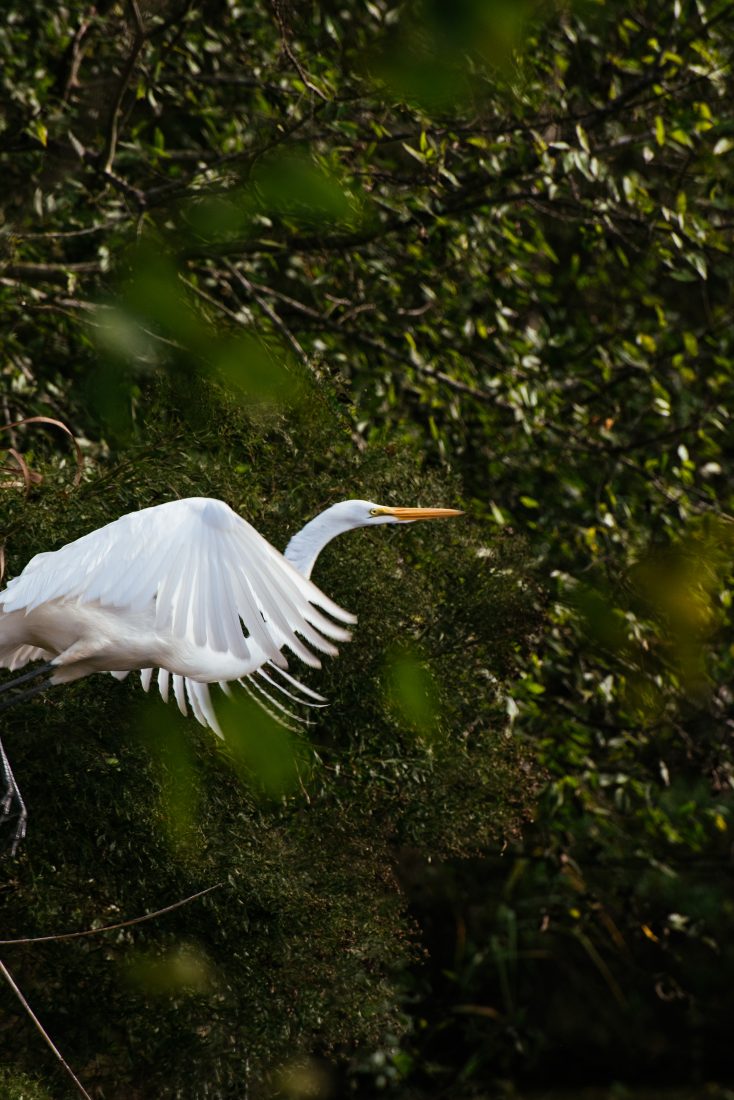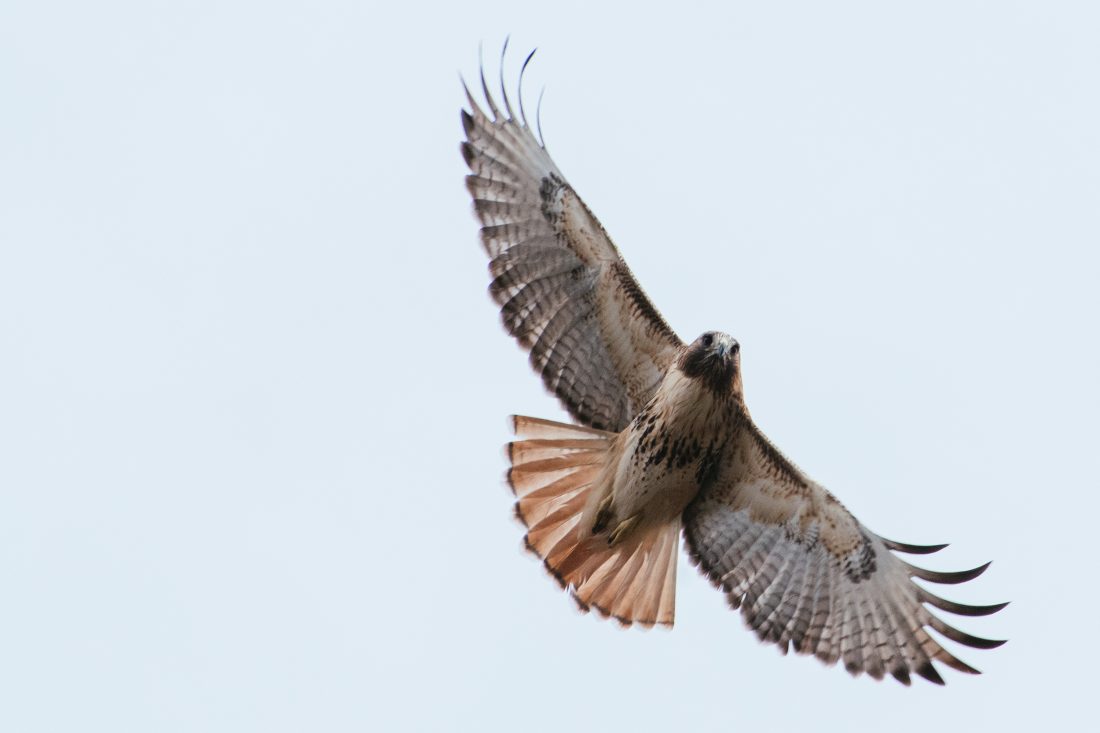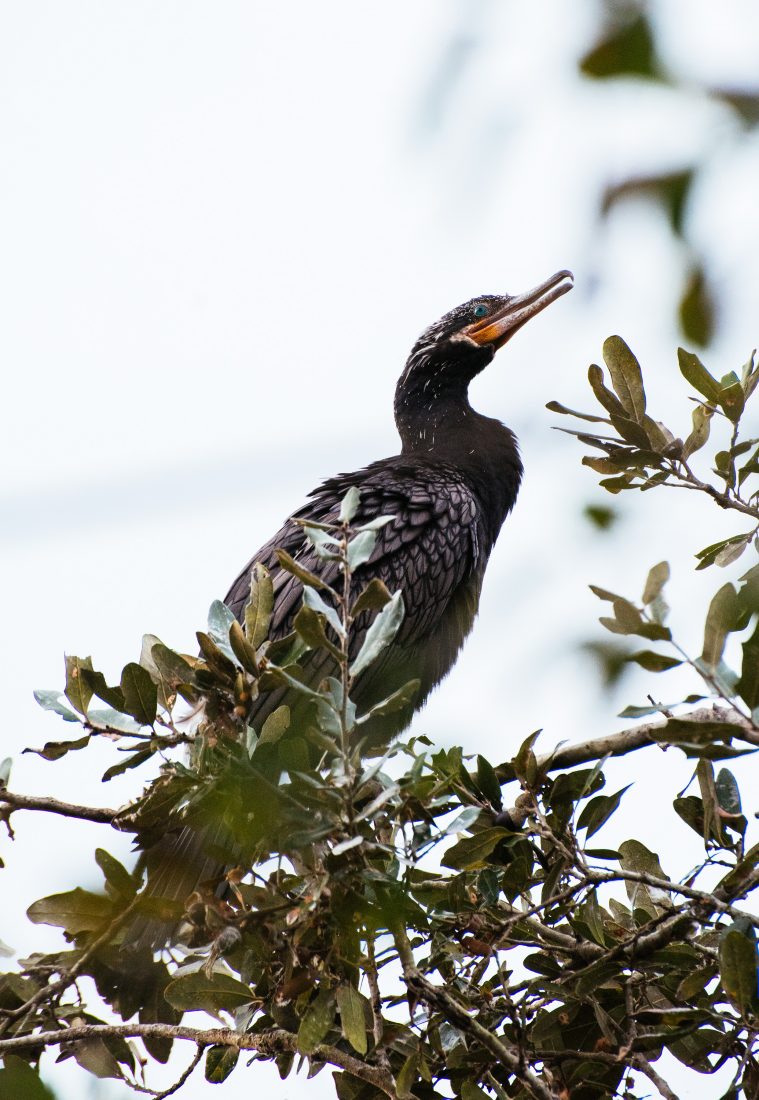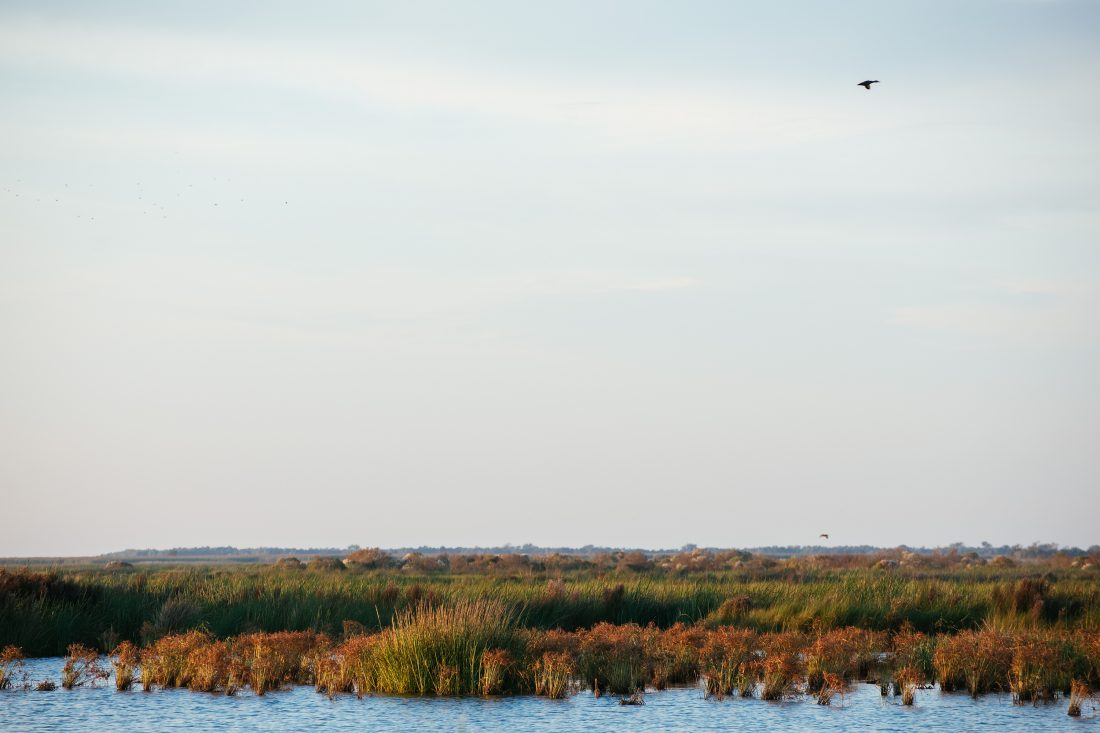
A view of new growth on tidal mudflats created at the NFWF marsh restoration site.
Photo: Rush Jagoe
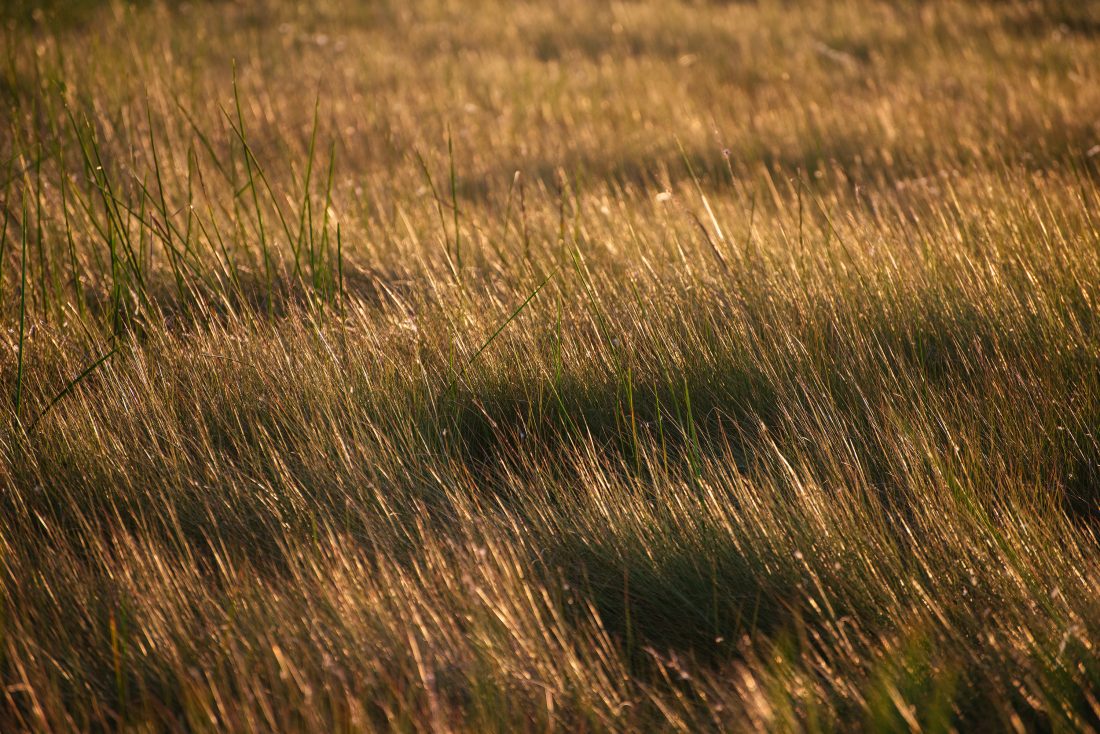
Marshhay (Spartina patens) and 3-square (Scirpus olneyi) are codominant species that make up most of the intermediate marshes of the Rainey Sanctuary landscape.
Photo: Rush Jagoe

Smaller canals are less used and therefore narrower, and more likely to have encroaching vegetation. Invasive plant species are occasional, but disapear when seasonal salinity increases.
Photo: Rush Jagoe
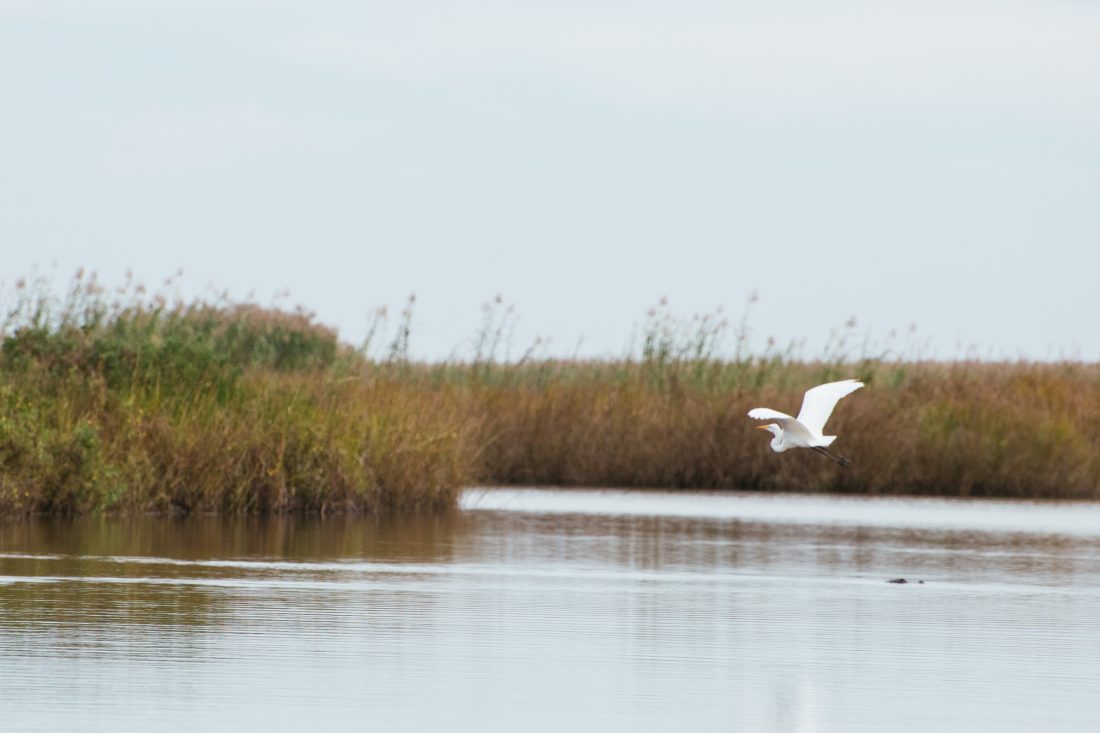
A great egret soars over the waterway, which is lined with Phragmites (the tall stuff), hog cane, Spartina alterniflora, and deer pea vine.
Photo: Rush Jagoe
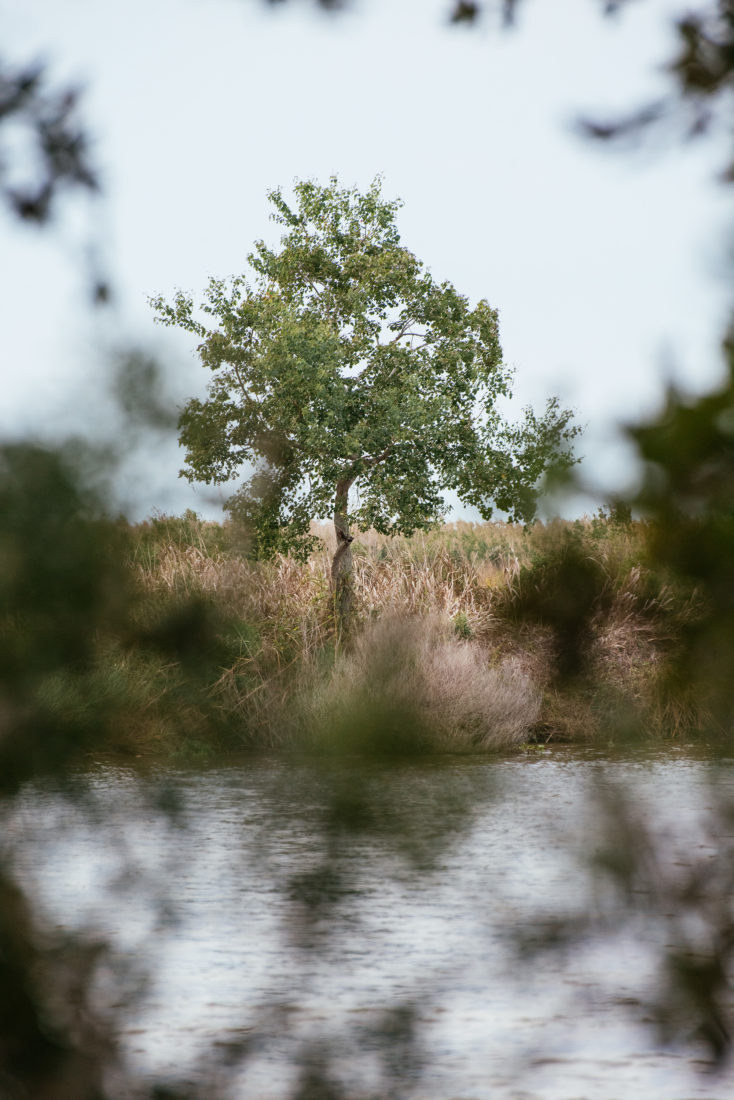
Tallow trees in the Rainey landscape are not viewed as an evil invader. Instead, they often provide a habitat for bird nesting and shelter where other woody plants can’t grow.
Photo: Rush Jagoe


